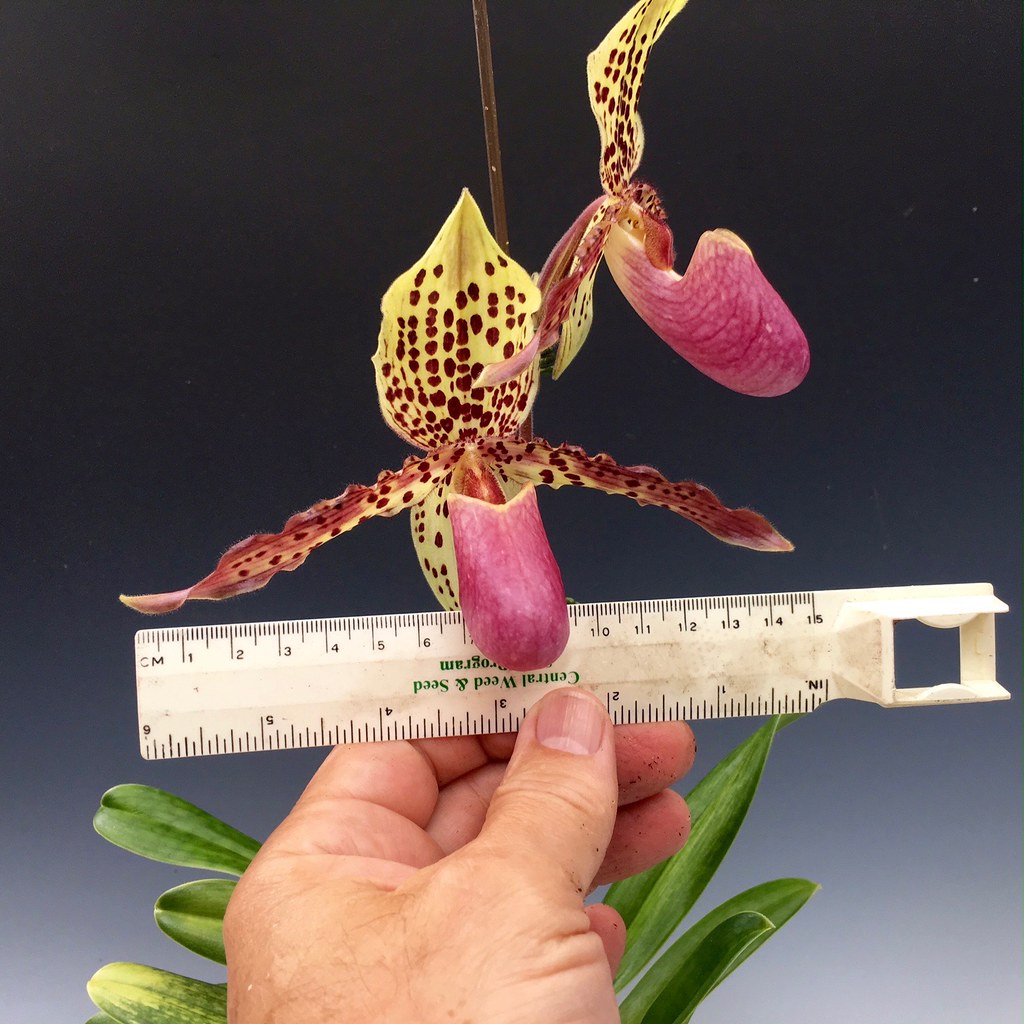Paph. henryanum was formally described in 1987. A 2009 article by Gruss and Rohr in Orchid Digest stated that all Paphiopedilum henryanum hybrids that were registered between 1989 and 1992, with one exception, were made by Gunter Dankmayer, gardener at Hilmar Doll’s Royal Orchids nursery in Germany. Paph. Dolliroth (henryanum x rothschildianum) was registered in 1992 by Doll but Orchids Limited could not find a picture of this hybrid. Henryanum is a miniature Paph so breeding with it is intended to produce compact plants with flowers that have good dorsal spots and nicely colored pouches.
Orchids Limited remade Dooliroth in 2008 using outstanding parents. This is the first boom on my plant from this cross, so it has been about 8 years from crossing to blooming. Orchids Limited is not aware of any other blooms from this cross.
The flower is a nice mixture of rothschildianum size and shape with henryanum spots and pouch coloring. The natural spread between the tips of the petals is a little over 15 cm. The plant is compact with a natural span between the tips of the longest pair of leaves on the blooming growth of 33 cm. The leaves have a tendency to chlorosis but this is improving on newer growths. It is obviously something cultural (light or nutrients). This plant has been grown only under LED lighting and in a mix of milled sphagnum moss/Growstones.
Flower:
https://www.flickr.com/photos/45750268@N03/shares/4570N1
Whole plant:
https://www.flickr.com/photos/45750268@N03/shares/s1M365
Orchids Limited remade Dooliroth in 2008 using outstanding parents. This is the first boom on my plant from this cross, so it has been about 8 years from crossing to blooming. Orchids Limited is not aware of any other blooms from this cross.
The flower is a nice mixture of rothschildianum size and shape with henryanum spots and pouch coloring. The natural spread between the tips of the petals is a little over 15 cm. The plant is compact with a natural span between the tips of the longest pair of leaves on the blooming growth of 33 cm. The leaves have a tendency to chlorosis but this is improving on newer growths. It is obviously something cultural (light or nutrients). This plant has been grown only under LED lighting and in a mix of milled sphagnum moss/Growstones.
Flower:
https://www.flickr.com/photos/45750268@N03/shares/4570N1
Whole plant:
https://www.flickr.com/photos/45750268@N03/shares/s1M365















































